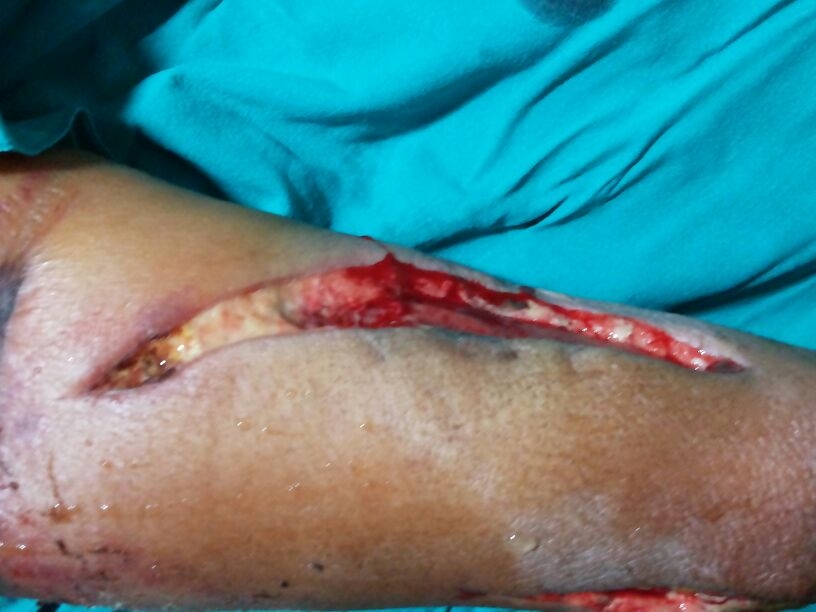COBRA ENVENOMATION
22 APR 2014
COBRA ENVENOMATION
Dr.ROOPESH KK, PG Y II
Dr.REHNA KAMAR, PG Y III
Dr.SOMASEKHARA REDDY, PG Y III
Dr.SHIBU T T VARGHESE, Deputy Chief
Dr.VENUGOPALAN PP, Head of the Department
MIMS Institute of Emergency Medicine, MIMS, Calicut
A 50yr old lady with no prior comorbidities, was bitten by a snake at her home at 10am. The
snake bit her thrice on her Rt distal fore arm. The snake was killed immediately and was
identified as a cobra. She was immediately taken to a local hospital whereby she was given 18
vials of ASV and tetanus toxoid. Due to drowsiness and agitation, she was intubated from
there, and then referred here for further care.
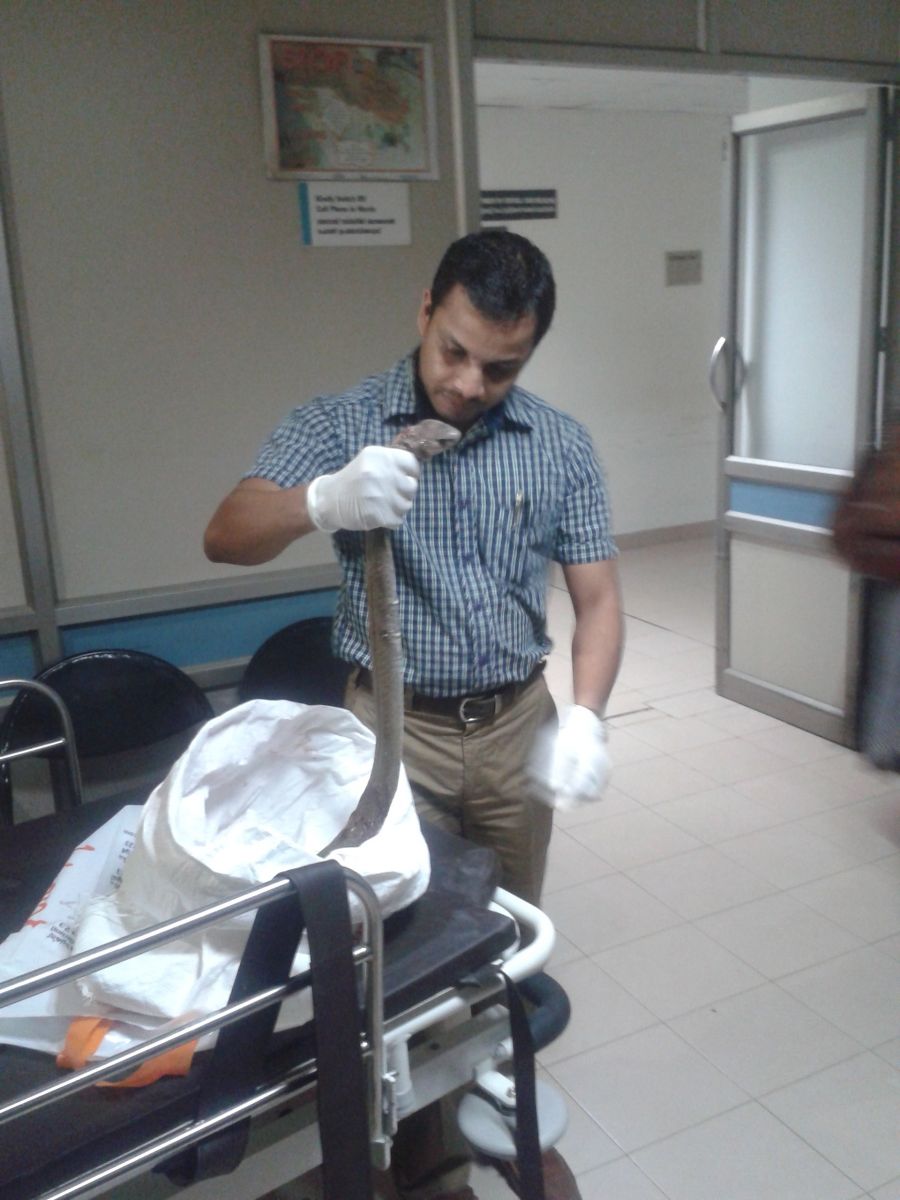
.jpg)
Same day, 4pm Brought to MIMS ED
On arrival, she was conscious, obeying commands and GCS was E3M6VT. She had mild ptosis.
Rt forearm had 3 bite marks, was swollen and erythematous upto the level of mid-forearm.
Initated antibiotics (Inj.Crystalline Penicilline, Inj.Metrogyl) & other supports. WBCT (Whole
blood clotting time) was <10mins.All other blood parameters were normal.
Consulted hand Surgeon, and a conservative line of management was decided upon for the
time being; limb elevation given to reduce oedema.
Overnight, ptosis and sensorium worsened, and she developed ophthalmoplegia & flaccid
paralaysis of all 4 limbs. She was given 10more vials of ASV, was initiated on Neostigmine and
Glycopyrrolate, following which symptoms improved.
Day 2
Sensorium improving, maintaining good urine output. Local oedema extended upto the upper
arm, and there were signs of local envenomation.
Day 3
Extubated as she was better, but since she developed tachypnea and hypotension, she required
reintubation after few hours and multiple inotropes. Blood lactates also increased. Antibiotics
were hiked to Meropenem, Linezolid & Vancomycin. Trop I was 0.74 (? myocarditis).Her urine
output was decreaseasing with worsening renal functions.
Day 4
Platelet count started to fall drastically ,it became 13,000.Platelet transfusion initiated.There was
further fall in platelet counts(7000) inspite of platelet transfusions.(21units transfused).The local
reaction of the skin started to ascend to the whole Rt upperlimb with blisters developing with
local necrosis.Pt became anuric (Urea-125,creat-4.1)She was initiated on hemodialysis.
Day 5
Her Hemoglobin also dropped to 7.4gms,Coagulation profile became grossly deranged with
features s/o DIC.2 units PRBC and 4 units FFP were transfused.
The local reaction became necrosed(necrotising fascitis).She started developing blisters in the
Rt flank and lower abdomen.She was taken for debridement and faciotomy was done for the Rt
hand.
Day 6
Patient fully conscious, oriented but was maintained on ventilator.Dialysis continued.
2 weeks later she was extubated..She became better.She had to stay back in hospital for few
more days as her wound are healing.She will need Myocutaneous flaps for her debrided areas
later.
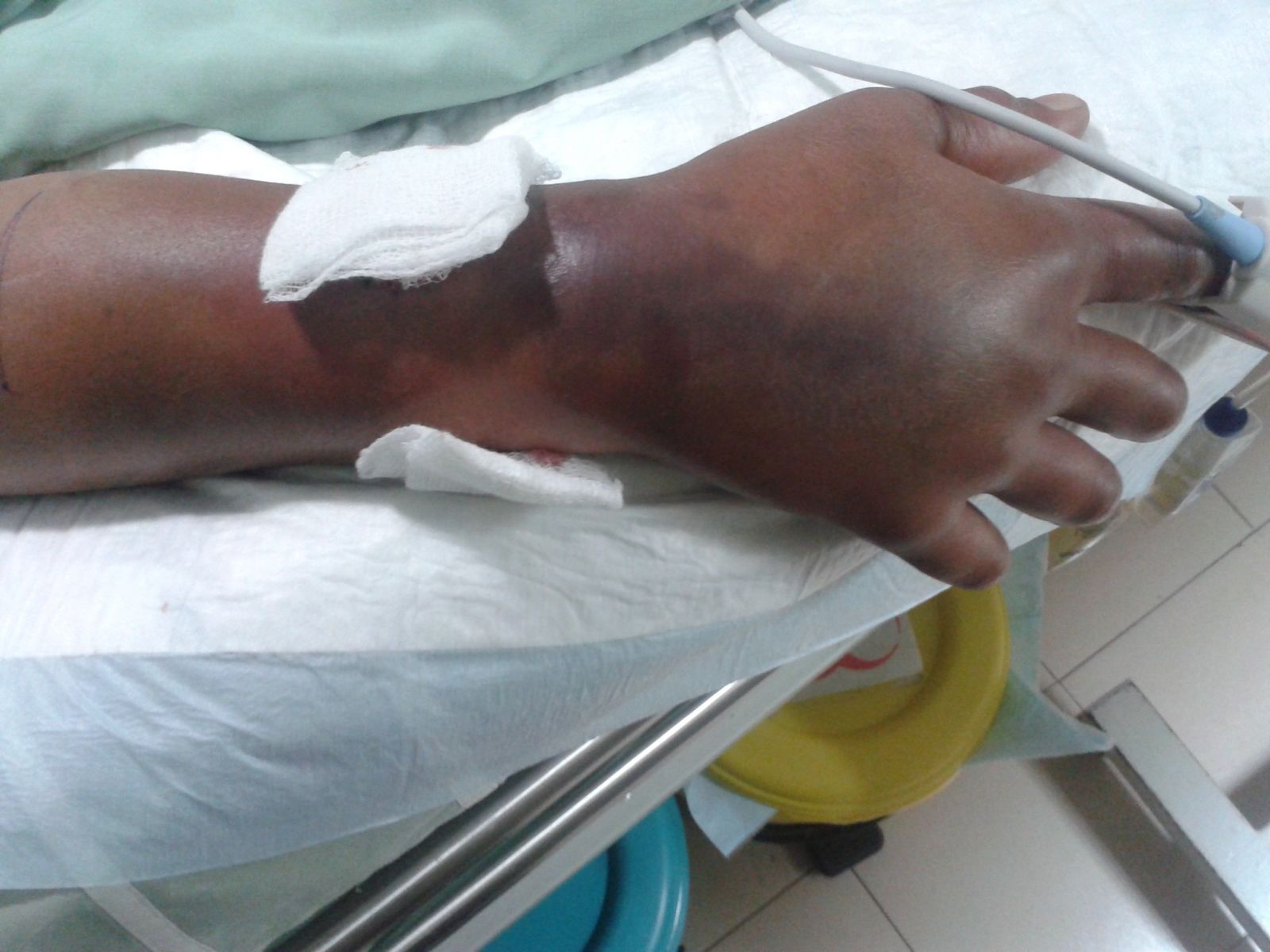

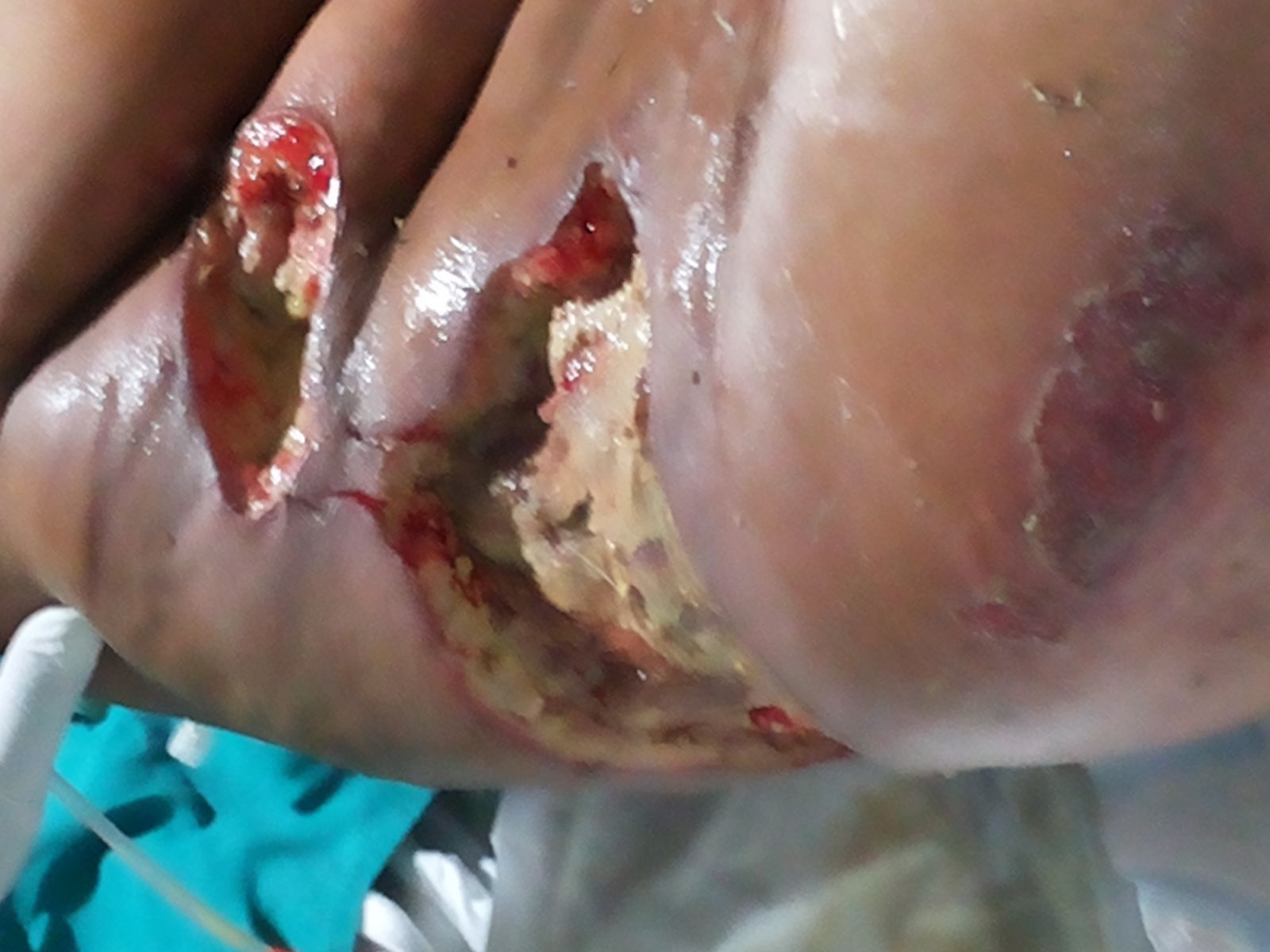
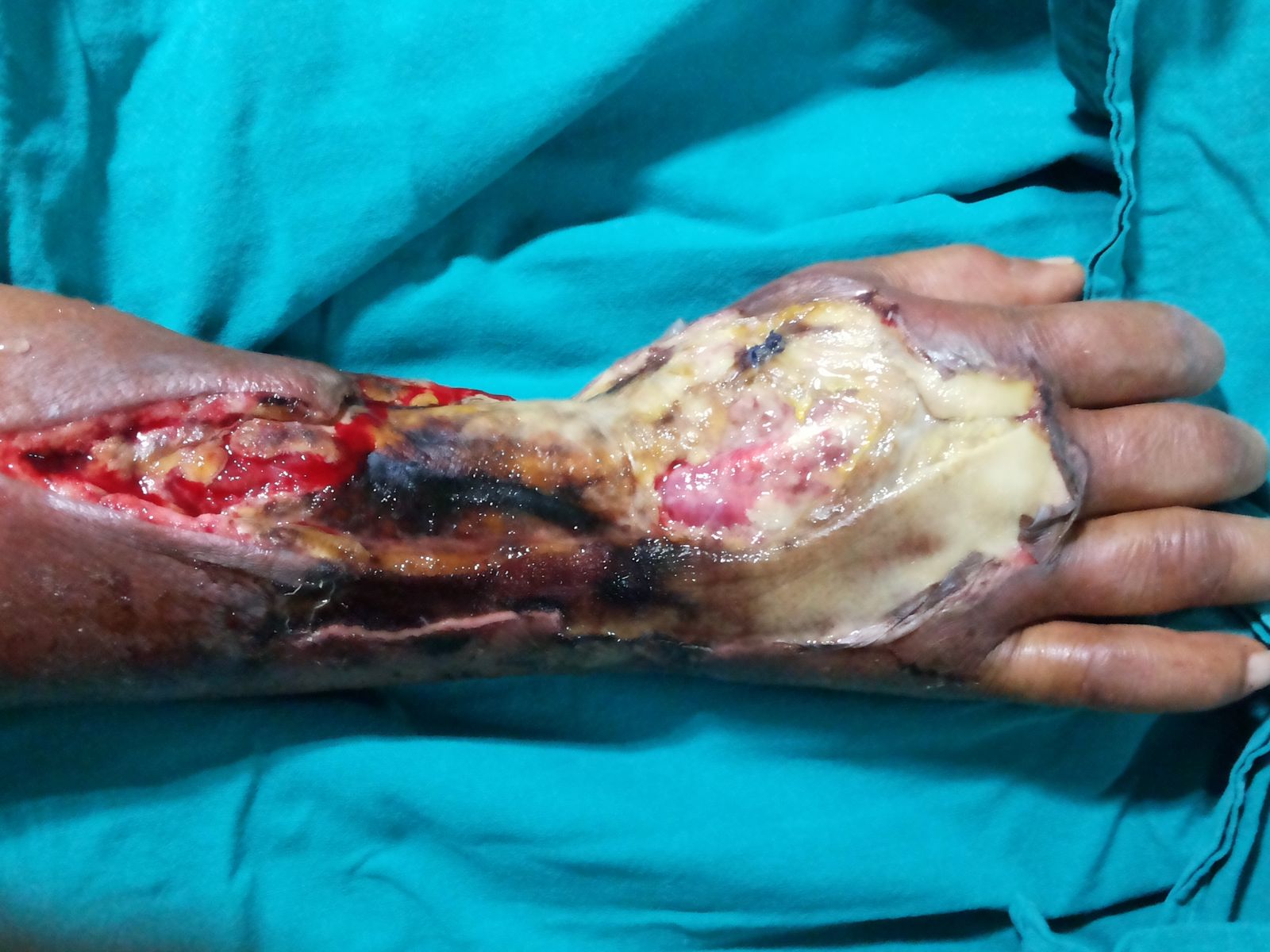
Discussion:
This is a case of cobra envenomation with large amount of venom which has caused
neuroparalytic symptoms and widespread local reactions and necrotising fascitis.
In this case the snake had bitten thrice which has lead to larger volumes of venom.Hence we
had to use more ASV than usual as she had persistent nerotoxic effects with regular ASV
doses.So it is evident that multiple bites by same snake can inject larger volumes of venom.
We used Neostigmine with glycopyrrolate in this case which had immedicate effect and
reversed neuro paralysis. This is indicated in cases of neuro toxic snake bites.
Patient had sepsis and DIC for which we had to use higher antibiotics.
Even though the neurotoxic effects were reversed the organ damages,especially the renal and
skin necrosis posed difficulty in recovery of the patient.
INDICATIONS OF ASV
The correct use of antivenom is essential and requires an informed evaluation of the patient.
Not every poisonous snakebite merits its use. Antivenom treatment carries a risk of severe
adverse reactions and in most countries it is costly and may be in limited supply. It should
therefore be used only in patients in whom the benefits of antivenom treatment are considered
to exceed the risks. Crotalidae polyvalent immune Fab (ovine) (CroFab; FabAV) has recently
been approved for use in the United States. CroFab is a venom-specific Fab fragment of
immunoglobulin G (IgG) that works by binding and neutralizing venom toxins, facilitating their
redistribution away from target tissues and their elimination from the body. It has been
demonstrated that these fragments are safe and effective, with a low incidence of sequelae;
however, allergic reactions can occur when any animal protein derivatives are administered to
human subjects. The overall incidence of immediate and delayed allergic reactions to this
product appears so far to be lower than that reported with conventional whole-IgG
antivenom.Antivenom is indicated whenever there are signs of systemic envenomation or
presence of severe local swelling
Conventional dose of anti-snake venom
Degree of envenomation Initial dose
Mild 5 vials (50 ml)
Moderate 5–10 vials (50–100 ml)
Severe 10–20 vials (100–200ml)
Additional infusions containing 5–10 vials (50–100 ml) are repeated until progression of
swelling in the bitten part ceases and systemic signs and symptoms disappear
ASV can be administered either by slow intravenous injection at a rate of 2 ml/min or by
intravenous infusion (antivenom diluted in 5–10 ml per kilogram body weight of normal saline
or D5 W and infused over 1 h). Slow intravenous injection has the advantage that a doctor or
nurse is present during the injection period when there is a risk of some early reaction to the
ASV. All patients should be strictly observed for an hour for development of any anaphylactic
reaction. Epinephrine should always be kept ready before administration of antivenom.
ASV should never be given locally at the site of the snakebite since it has not been shown to be
effective and, moreover, this route of administration is associated with significant risks. For
example, it is extremely painful and may increase intracompartmental pressure.
Intramuscular injections are also not preferred since ASV is composed of large molecules (IgG
or fragments) which are absorbed slowly via lymphatics, making the bioavailability by this
route poor as compared to intravenous administration. Other disadvantages include pain on
injection and risk of hematoma formation and sciatic nerve damage in patients with
hemostatic abnormalities.IM injections should only be given in settings where intravenous
access cannot be obtained and/or the victim cannot be transported to a hospital immediately.
Lessons learnt:
Snake bites have very bad sequelae, complications being unpredictable.
In this case, the local reaction became a generalized reaction with toxic effects
Cobra venom can have hemotoxic effects also and can also cause multi system shut down.
Neuroparalytic effects can be reversed using ASV and neostigmine
Hemolytic effects needs support transfusions.
Reference:
bja.oxfordjournals.org/content/49/10/1065
www.apiindia.org/medicine_update_2013/chap94.pdf
www.ncbi.nlm.nih.gov/pmc/articles/PMC2700615
Tintinally emergency medicine 2012















